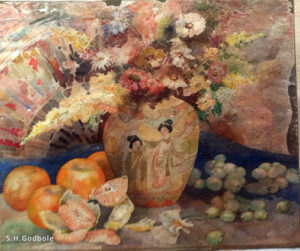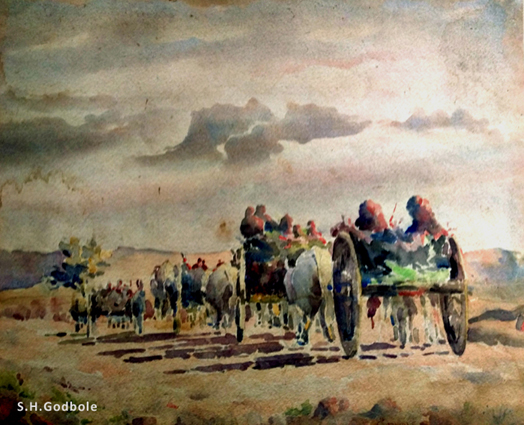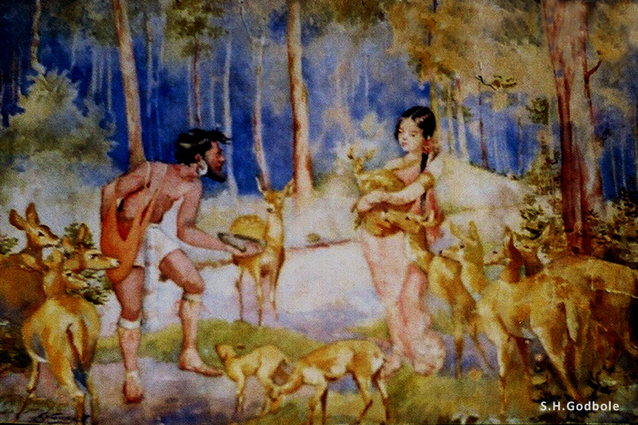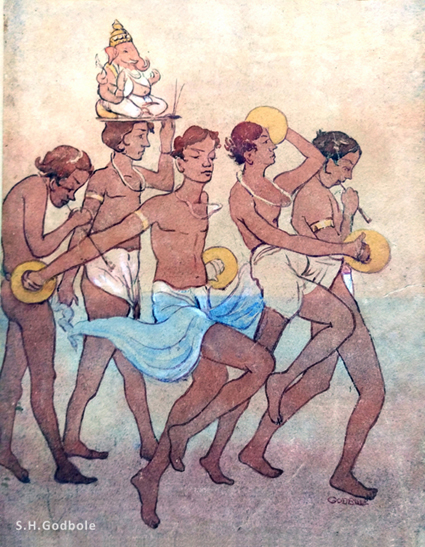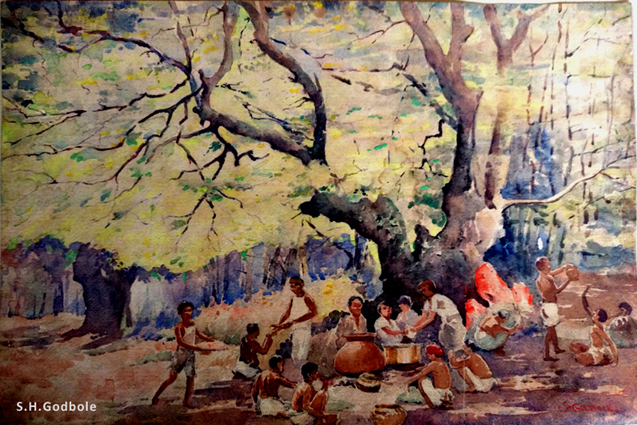“Antique Japanese Vase in Artist Godbole’s legendary farmhouse in Pune”, by S.H.Godbole, watercolor, Pune, 1950
This very vibrant “still life” was produced by Godbole around 1950 which was the peak of his creative genius. He was well settled in his farm house which he had created after his retirement from his teaching job. He had no connection with the Bombay Art Society which he once steered under the close patronage of the governor of Bombay Presidency. In the name of modernity Indian artists were coming under increasing influence of “western” art movements of the first half of 20th century. Godbole was now a free man with no pressing need to align with any movement or any society. He was 65 and had the experience of a life time with his favourite medium: water colour.
Godbole was passionate about collecting art objects wherever he found them. The Japanese Vase seen in this painting was one of these. Artist Mumbiram has described what a magical experience it was to visit Godbole Park. It had exotic trees, birds and animals. But the house itself was studded with Godbole’s own art. This painting used to hang above the dining table in Godbole’s kitchen. The painting is a unique masterpiece of a still life in impressionistic style. The vase itself is superbly rendered. The assorted fruit in the foreground are rendered in delightfully imaginative brush work. The flowers in the vase are deliberately ambiguous and effortlessly merged into the dream-like background which looks like a Japanese fan on the left and a silk cloth on the right. Altogether it shows an entirely sovereign state of the mind of an inspired artist, who has honed his technique through his own experience alone. During the deluge of dam-breaks that inundated much of Pune city in 1961, this masterpiece along with all others of Godbole’s works lay under thick layers of mud. His grandson, Artist Mumbiram, then a young teenager, along with his mother Anjani worked tirelessly to salvage most of them. Later on when Mumbiram created his own legendary atelier near Pune’s Mandai vegetable market this painting adorned a place of pride in the midst of Mumbiram’s own art. This still life is an example of the versatility of the themes that Godbole handled. One cannot help but notice that even this still life has become uniquely interesting because of the figures of two Japanese women engaged in a mystical discourse painted on the vase. One notices that even Godbole’s landscapes are invariably populated by human figures. That makes Godbole’s art quintessentially Personalist Rasa Art.
